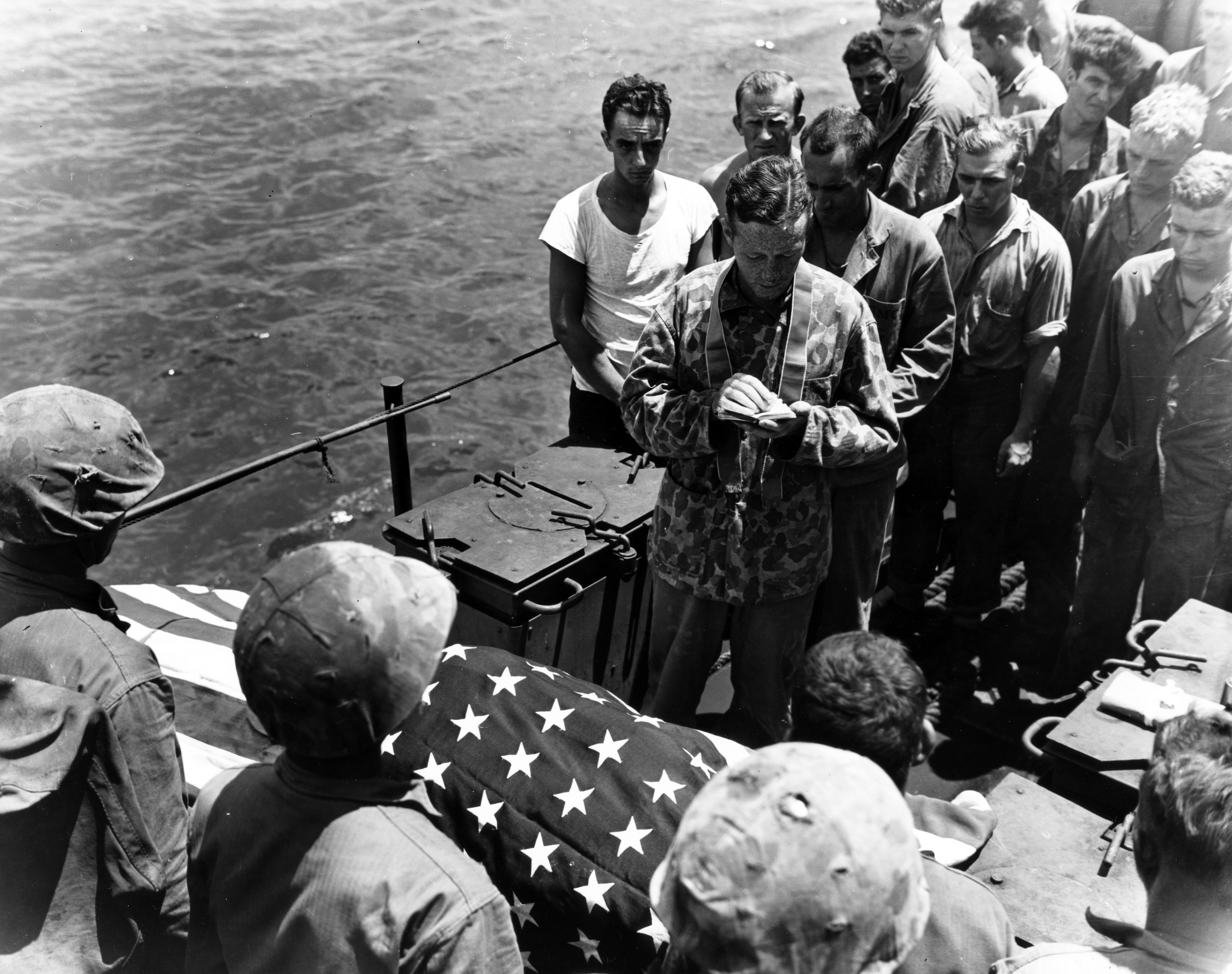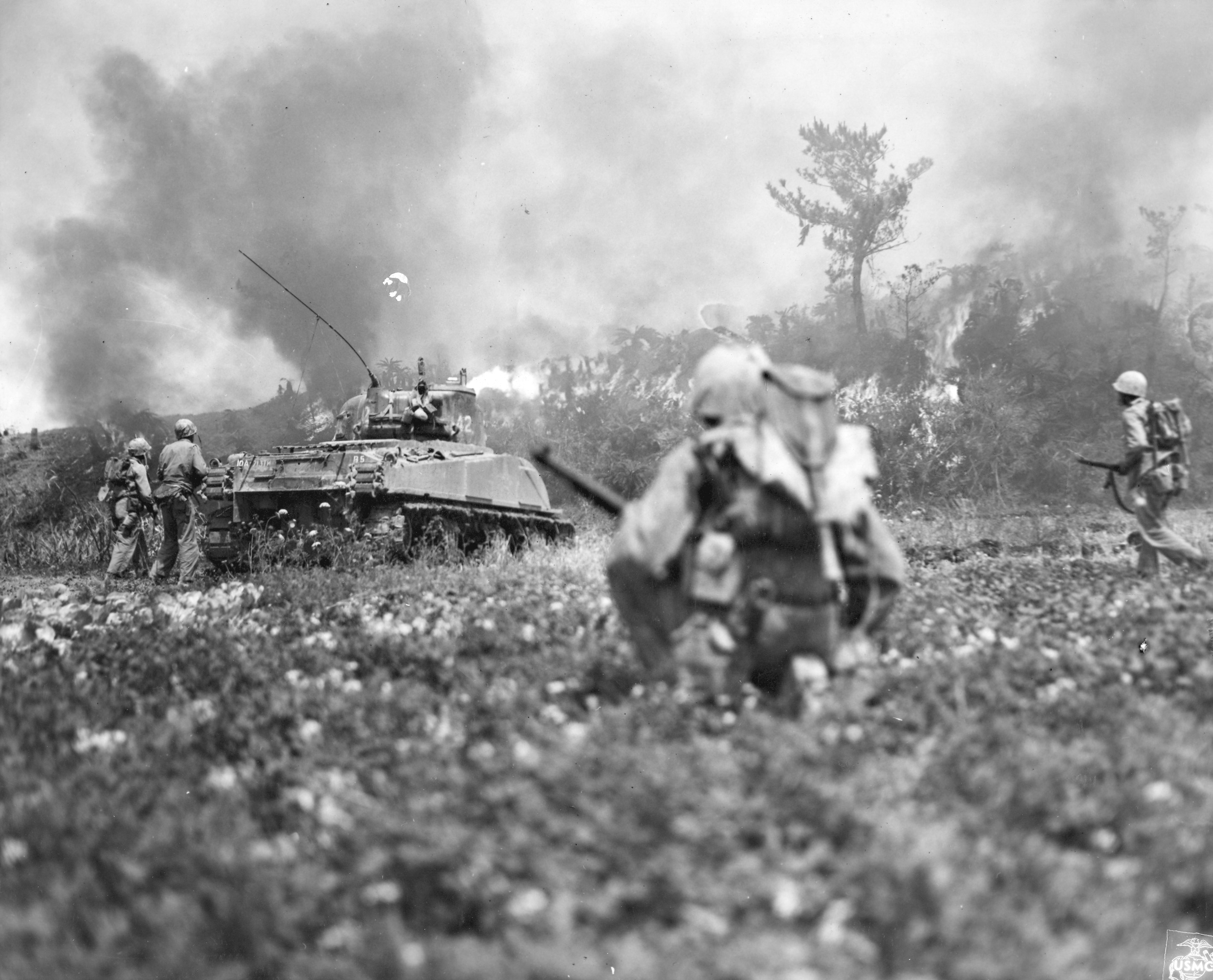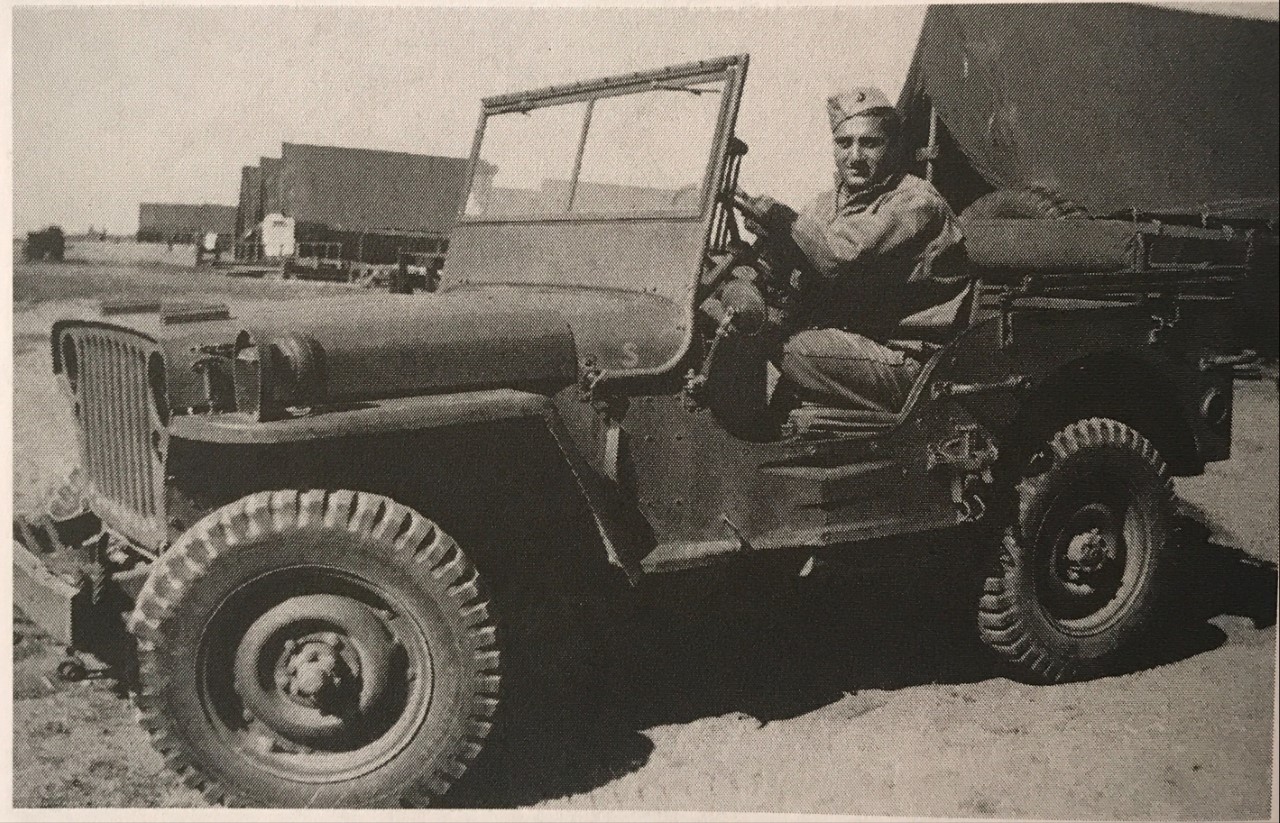On the morning of November 20, 1943, nearly 2,600 highly trained “Japanese marines” awaited the incoming Americans. Of the 5,000 men who landed on the first day, no one had penetrated more than 70 yards once ashore. The bloodletting in the Tarawa lagoon had begun.
Among those men, on Red Beach 1, was Sergeant Edward “Ed” Gazel of the 2nd Marine Division. Of the 40 men in his LCVP, he was only one of 10 to make it to the shore unscathed. He would make similar landings at Saipan, Tinian, and again at Okinawa.
Gazel, who turns 99 today, spoke to HistoryNet from his home in Michigan about the war in the Pacific. And as for turning 99? He tells readers to take note, insisting that to live a long life one must always: wear comfortable shoes; eat their fruits and vegetables; take two shots of brandy every night with their dinner; and, most importantly, don’t play leapfrog with a unicorn.
Do you remember any funny incidents at boot camp–that kind of shared misery–that stick out to you?
When I got to boot camp, we spent two weeks at the rifle range. All the rifles were for right-handed men so I said, “hey sarge. I’m left-handed.”
He said to me, “you were left-handed.” Consequently, I didn’t make sharpshooter. [Laughs]
You were part of the first wave at Tarawa. Did the natural coral defenses cause any difficulty?
We had a lot of casualties. When we got out our Higgins boat we had to cross a reef about 300 yards from the shore. We couldn’t move. There was an officer standing alongside me and he told the coxswain to check the depth. The coxswain said, “five feet, sir.”
The officer said, “that’s fine. Let the ramp down.” We jumped into water up that was up to our chests so we had to hold our rifles and ammo in the air. The Higgins boat just left us. We had to wade to the shore across the coral.
I was wearing a backpack with a rolled-up poncho. I had a .45, a canteen, and a machete. As we were walking, a man five feet away from me…I saw him get killed. He floated right by me. We had a lot of casualties there.
It was seemingly a miracle that there was no banzai attack to push the Marines back. Was there any worry or anticipation that there would be an attack that first night?
It took us all day to get ashore. I was in the water for three to four hours. Had the Japanese done that [banzai attack], they would have wiped us all out, but they didn’t. We only had about 15 feet of beach as the beach was full of coconut logs. We had to stay as low as possible as the bullets flew over our heads. The next morning our weapons were no good, but finally two tanks made it through—China Gal and Colorado. We secured the island in four days…but we took a lot of casualties.
The fighting on Saipan was incredibly vicious and oftentimes down to the last man for the Japanese. It is also known for its horrific mass civilian suicides. Did you witness any of this and can you talk more about the fighting on Saipan itself?
We saw the natives jumping off the cliffs. They thought they were going to get raped by us. It was a horrible thing. I fought on Saipan for about 30 days, until the island was secure.
My job was to provide ammo and water to the tanks. On the second day on Saipan, I was picking up cases of ammunition—they weighed about 90 pounds—and as I was swinging one onto the back of an amtrac it felt as though someone had slashed a knife across my back. I couldn’t walk. My buddies laid me down in a sweet potato patch and they covered me up with leaves and twigs. I laid there for three days. I couldn’t move.
Finally, on the fourth day, the corpsman said, “sergeant, you gotta get up.” They got me to walk back to our compound and I laid there for another three days. Turns out I had a herniated disc.

Tinian is famous for the feint tactic, with Gen. Holland Smith declaring the invasion, “the most perfect amphibious operation in the Pacific War.” Was that your experience?
Nothing was perfect. Real bullets kill.
You were with the initial invasion force at Okinawa. How eerie was it to land on Okinawa unopposed?
Our tanks were scaring everybody. We witnessed the kamikaze planes hitting our ships out in the water. I was only there for three weeks [before being evacuated]. Then in August, Uncle Sam dropped the bombs on Japan, and it was over.
After that thought we were going home, but instead we boarded an LST and went on to Nagasaki. I thought, “oh my god, we can’t be. Not on an LST, there’s no fresh water,” but we did.
When we got to Japan, we saw where the bomb hit from about a mile away. It was all just rubble.

You left Japan in December of 1945. What was that like coming home?
A big ocean liner came to take us home on December 15. They called for us to line up and two corpsmen said, “drop your drawers for a short-arm inspection.” Those in the Marine Corps will know what that is…
There was a short-arm inspection and then you would walk up the gangplank to the ship. If you didn’t pass you couldn’t go. I found out later that the Navy had put a first aid station right next door to every brothel in Japan.
We crossed the dateline on Christmas eve—got two Christmases—and then we landed in San Diego on January 7.
When I left the Marine Corps I said, “I’ll never sleep on the ground again, and I won’t pick up a weapon in anger again…and I haven’t.”

